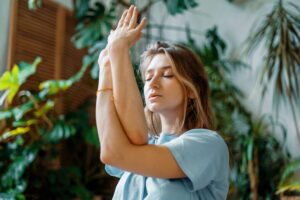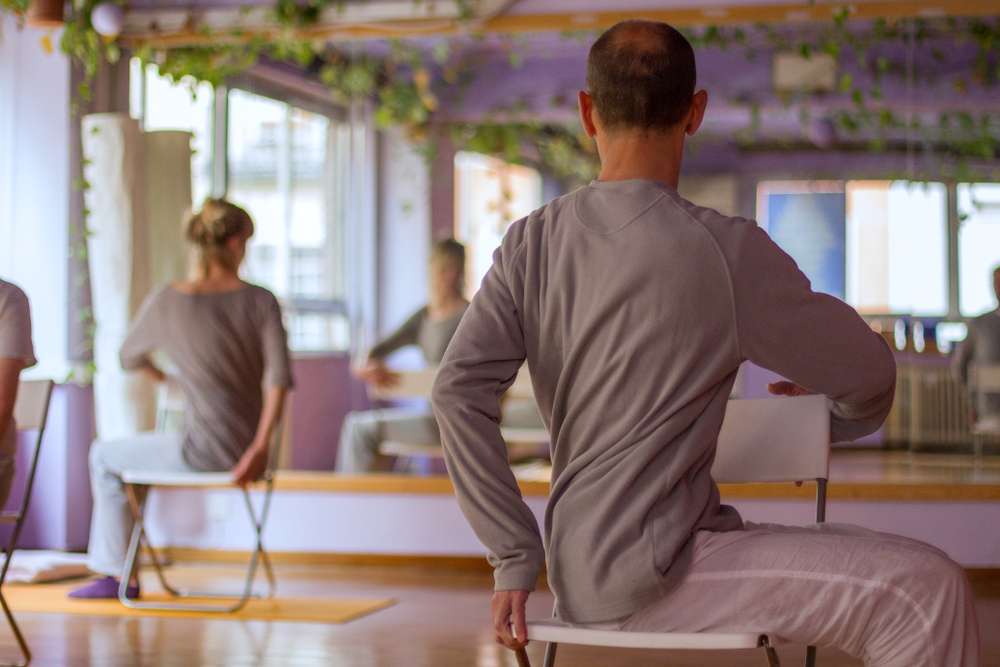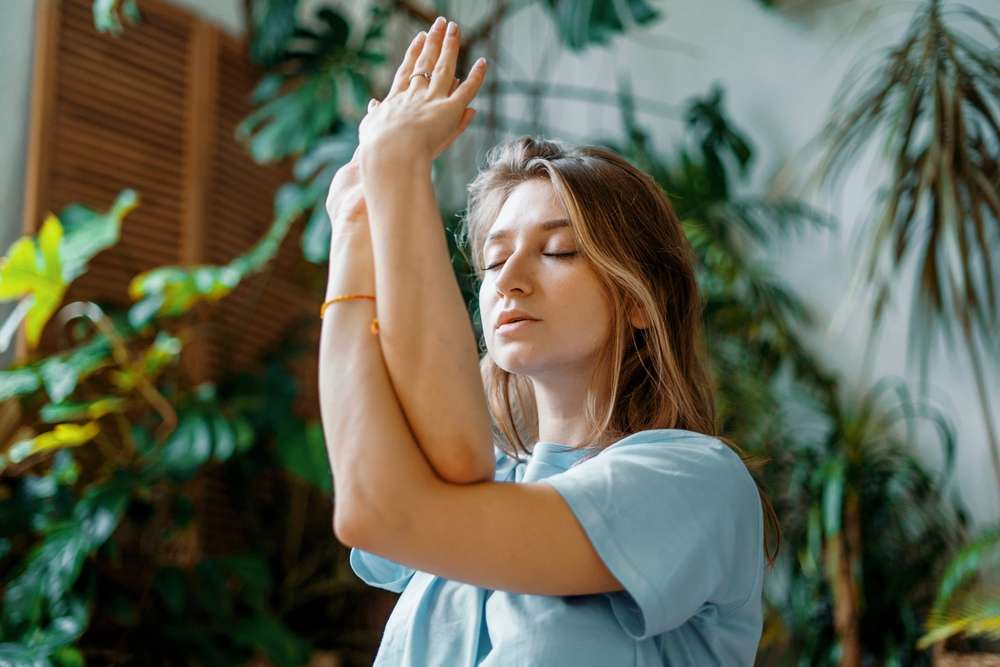Introduction:

The pervasive grip of anxiety is a shared experience for many individuals worldwide, as anxiety disorders stand among the most prevalent mental health challenges. This prevailing issue necessitates effective strategies to combat anxiety and uplift overall mood. Regardless of life’s stage, anxiety symptoms can manifest unexpectedly, exerting a profound impact on mental well-being. In light of these challenges, a highly effective approach emerges in the form of tailored mental exercises designed to alleviate anxiety and stress. This article aims to delve into five specific mental exercises dedicated to addressing anxiety, providing valuable insights on regaining control and navigating the complexities of life with heightened calmness and focus.
Navigating the intricate landscape of mental health, particularly when grappling with anxiety, requires a multifaceted approach that acknowledges the interconnectedness of thoughts, feelings, and behaviors. The importance of mental exercises becomes apparent as they offer targeted techniques to manage and mitigate anxiety symptoms. As individuals encounter the ebb and flow of life, incorporating these exercises into daily routines empowers them to proactively address stressors and maintain a healthier mental state. By exploring these mental exercises, individuals can unlock valuable tools for their well-being toolkit, fostering resilience and enhancing their capacity to face the challenges posed by anxiety in various facets of life.
Mental Exercises for Anxiety:
1. Deep Breathing Exercises:
Deep breathing, also known as diaphragmatic breathing, stands out as one of the simplest yet most powerful mental exercises for managing anxiety. By focusing on your breath, you activate the body’s relaxation response, reducing stress and fostering a sense of calm. There are various deep breathing exercises, and a straightforward one involves:
- Finding a comfortable position, whether sitting with feet flat on the floor, cross-legged, or lying on a flat surface.
- Closing your eyes and taking a slow, deep breath through your nose.
- Holding your breath for a count of four, then exhaling slowly through your mouth, making the exhale longer than the inhale.
- Repeating this process for several minutes until a sense of calmness sets in.
2. Progressive Muscle Relaxation:
Progressive muscle relaxation entails systematically tensing and releasing different muscle groups to achieve deep relaxation. This exercise heightens awareness of physical sensations and induces a state of profound relaxation. The process involves:
- Finding a quiet and comfortable place to sit or lie down.
- Tensing all muscles in your toes tightly, holding for a count of 10, and then slowly releasing the tension.
- Progressing through each major muscle group, releasing tension, and visualizing stress leaving the body.
3. Mindfulness Meditation:
Mindfulness meditation, focusing on the present moment without judgment, is a practice renowned for reducing negative thoughts, improving focus, and promoting relaxation. A simple routine involves:
- Sitting comfortably in a quiet space, closing your eyes, and taking a few deep breaths.
- Observing thoughts and emotions without judgment, allowing them to pass without reacting.
- Redirecting focus back to the breath, gradually increasing practice duration.
4. Cognitive Reframing:
Cognitive reframing, a potent tool in cognitive-behavioral therapy, involves identifying and challenging negative thoughts contributing to anxiety. The process includes:
- Recognizing a negative thought or belief.
- Questioning the accuracy of the thought, evaluating whether it’s based on facts or feelings.
- Replacing the negative thought with a more positive, realistic one.
5. Guided Imagery:
Guided imagery entails visualizing a peaceful scene or setting to promote relaxation. Particularly beneficial for those grappling with anxiety, it distracts from anxious thoughts and induces complete relaxation. The steps include:
- Finding a comfortable, disturbance-free place, closing your eyes.
- Visualizing a peaceful place using all your senses, immersing yourself in tranquility.
Additional Self-Directed Anxiety Treatments:
1. Physical Activity:
Regular physical exercise, from brisk walks to resistance training, effectively manages various mental illnesses, including anxiety. Just 20 minutes of aerobic exercise per day can significantly impact mood and reduce anxiety.
2. Heart Rate Variability Biofeedback:
Monitoring heart rate to control the body’s stress response, often complemented by breathing exercises, teaches individuals to reduce heart rate during stressful moments, fostering a sense of calm.
Understanding Anxiety:
1. What is Anxiety?
Anxiety is a normal and often healthy emotion characterized by worried thoughts, feelings of tension, and physical changes like increased heart rate. However, when persistent and interfering with daily life, it transforms into an anxiety disorder, encompassing various conditions with specific symptoms.
2. The Connection Between Anxiety and Stress:
Anxiety and stress share an intimate connection. Stress, stemming from work, relationships, or other life sources, can exacerbate anxiety symptoms. Recognizing and managing stress levels can reduce anxiety and enhance overall mental health.
How Mental Exercises Impact Anxiety – The Science:
1. Cognitive-Behavioral Theory for Mental Health:
The foundation for these mental exercises lies in cognitive-behavioral therapy (CBT), asserting the interconnectedness of thoughts, feelings, and behaviors. By identifying and challenging negative thoughts, CBT tools reduce anxiety and enhance symptom management.
2. How Mindfulness Affects Anxiety Symptoms:
Another approach gaining prominence is mindfulness meditation, involving maintaining a moment-by-moment awareness of thoughts, feelings, body sensations, and the surrounding environment. Mindfulness can help recognize early signs of stress and anxiety, allowing intervention before symptoms escalate. This often involves breathing exercises, aiding in slowing down the heart rate, relaxing tense muscles, and promoting feelings of calm.
Conclusion:
Anxiety’s impact on life is undeniably profound, affecting individuals across various aspects of their daily existence. Despite its pervasive nature, there exist effective methods to manage and mitigate the effects of anxiety. A crucial aspect of this management lies in the incorporation of mental exercises into daily routines. These exercises play a pivotal role in empowering individuals, providing them with the tools to comprehend and regulate their responses to stress and anxiety.
It’s essential to recognize that while mental exercises offer valuable relief, they should not be viewed as substitutes for professional treatment. Seeking the guidance of mental health professionals is crucial for a comprehensive approach to anxiety management. Professional assistance provides tailored strategies and support, addressing the unique complexities of an individual’s anxiety experience. Overcoming anxiety is a nuanced journey that demands time, patience, and consistent practice. Every small step taken toward managing anxiety signifies progress on the path to a healthier, happier life. Acknowledging the significance of seeking professional help and committing to the ongoing process of self-care are integral components of this transformative journey toward mental well-being.

